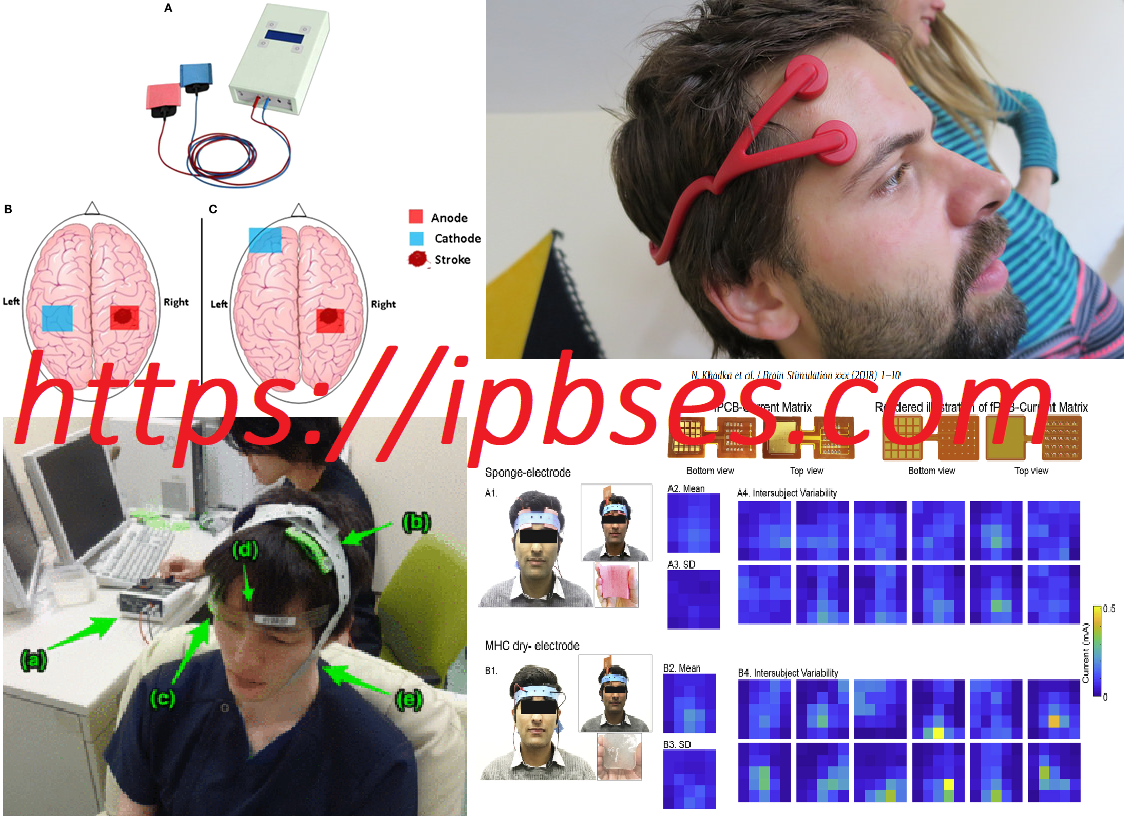پژوهشگران دانشگاه سیتی کالج نیویورک ایالات متحده امریکا و دانشگاه سئونگنام کره جنوبی به بررسی کاربردهای روش نوین tDCS خشک در نوروتراپی پرداختند.
روش:
در این پژوهش آزمایشی ۲۰ داوطلب سالم شرکت نمودند. داوطلبان در ۶ جلسه tDCS با الکترودهای خشک و خیس و جریانهای ۱٫۵ و ۲ میلی آمپر بصورت تصادفی شرکت نمودند. در تمامی جلسات آزمودنیها در تکلیف تصمیمگیری کلامی شرکت نمودند. همچنین آرایه سنسورهای دستگاه به شکل ترکیبی و جدید بر جمجمه داوطلبان اجرا شد.
نتایج نشان دادند:
- در اجرای tDCS به مدت ۲۰ دقیقه، بین روشهای رایج الکترودهای همراه با پدهای خیس در مقایسه با tDCS خشک تفاوت معناداری وجود ندارد.
- میزان تحمل، التهاب پوست، و پیامدهای منفی اجرا، چه در tDCS خشک و چه در tDCS خیس (با اسفنج) تفاوتی با هم ندارند.
- هزینه اجرای tDCS خشک نسبت به tDCS خیس و نیز میزان آلودگی آن (بدلیل نبود محیط و پدهای خیس) بسیار کمتر است.
Dry tDCS: Tolerability of a novel multilayer hydrogel composite non-adhesive electrode for transcranial direct current stimulation
Abstract
Background
The adoption of transcranial Direct Current Stimulation (tDCS) is encouraged by portability and ease-of-use. However, the preparation of tDCS electrodes remains the most cumbersome and error-prone step. Here, we validate the performance of the first “dry” electrodes for tDCS.
A “dry electrode” excludes 1) any saline or other electrolytes, that are prone to spread and leaving a residue; 2) any adhesive at the skin interface; or 3) any electrode preparation steps except the connection to the stimulator. The Multilayer Hydrogel Composite (MHC) dry-electrode design satisfied these criteria.
Objective/Hypothesis
Over an exposed scalp (supraorbital (SO) regions of forehead), we validated the performance of the first “dry” electrode for tDCS against the state-of-the-art conventional wet sponge-electrode to test the hypothesis that whether tDCS can be applied with a dry electrode with comparable tolerability as conventional “wet” techniques?
Methods
MHC dry-electrode performance was verified using a skin-phantom, including mapping voltage at the phantom surface and mapping current inside the electrode using a novel biocompatible flexible printed circuit board current sensor matrix (fPCB-CSM). MHC dry-electrode performance was validated in a human trial including tolerability (VAS and adverse events), skin redness (erythema), and electrode current mapping with the fPCB-CSM. Experimental data from skin-phantom stimulation were compared against a finite element method (FEM) model.
Results
Under the tested conditions (1.5 mA and 2 mA tDCS for 20 min using MHC-dry and sponge-electrode), the tolerability was improved, and the erythema and adverse-events were comparable between the MHC dry-electrode and the state-of-the-art sponge electrodes.
Conclusion
Dry (residue-free, non-spreading, non-adhesive, and no-preparation-needed) electrodes can be tolerated under the tested tDCS conditions, and possibly more broadly used in non-invasive electrical stimulation.
Keywords
Dry electrode, tDCS, Tolerability, Erythema.
لینک منبع پیشنهادی برای مطالعه بیشتر  (further reading)
(further reading)

and ease-of-use. However, the preparation of tDCS electrodes remains the most cumbersome
and error-prone step. Here, we validate the performance of the first “dry” electrodes
for tDCS. A “dry electrode” exclu…
/


TELEGRAM:
https://t.me/DrAmirMohammadShahsavarani
INSTAGRAM:







